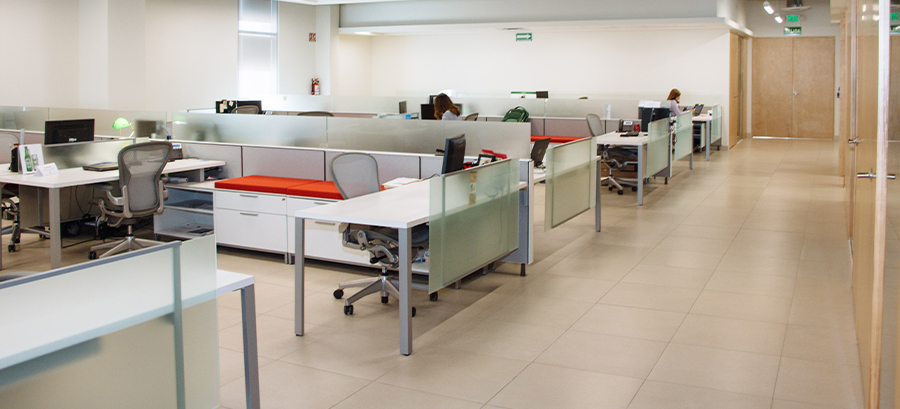Trying to predict the future seems a bit tricky these days, doesn’t it? Is Tom Brady retired? Is Bitcoin a good buy? Will gas prices ever go down? Depending on the week, the answers could be both yes and no.
Over the past two years, the trends we’ve witnessed have produced the same degree of confusing uncertainties, causing us to wonder what’s next?
Reports about the Great Resignation have me thinking of our work just under a decade ago. When surveying employees and students from coast to coast, we found that many people were applying to 70-80 jobs before finding themselves in a company that was… fine, but not great. At the time, we believed that about 60% of the workforce was in the wrong job. It wasn’t for lack of skills or education, but rather the labor market was so tight that people had to take what they could get. This reality left us wondering, would it ever change?
Fast forward to today, we see a vastly different climate: sliding birth rates, slowed immigration, the gig economy has exploded, baby boomers are retiring at record rates, and the workforce as we know it is hungry for talent. So hungry, in fact, that in America alone, there are 11 million vacant positions and only about 6.5 million people to fill them. Suddenly, we’re in the middle of a talent crisis. This situation places employees in a unique position to have leverage like never before.
But this begs the question, what now?
As we ride out the turbulent waters of The Great Resignation, we can see both good and bad news on the horizon.
The bad news? The worst is yet to come.
The good news? After the third wave, the workplace will be in a fantastic position for years to come.
Wave 1: Change by Force
Timeframe: 2020-present
When the pandemic first hit, employers everywhere had no choice but to make significant changes. The office was no longer safe, so millions of employees learned (some better than others) how to operate in a remote work environment.
Working online introduced a cocktail of complexities; for one, many employees found that their boss wasn’t very supportive or skilled in leading remote teams. This new work style propelled people to adjust their personal lives as well. Many moved, others looked for a new leader or team, and some explored new ways of living.
These shifts birthed the first title wave of the Great Resignation, jump-started by 69 million Americans either quitting or switching jobs in 2021. This mass exodus has significantly altered the work environment. For instance, an estimated 2 million women in the United States left (some forced to leave) their jobs amidst the pandemic- many to be full-time mothers. Or consider how approximately 28.6 million Baby Boomers (those born between 1946 and 1964) retired from their jobs by the third quarter of last year. There is no doubt that the loss of these two demographics completely transforms our future work environment.
But it’s not all bad news; due to this massive shift, the world is propelled to rethink how we both do and view work, from asynchronous workspaces, increased flexibility, and more extensive work benefits. As a result, leadership development is kicked into overdrive; people are finding happier working situations and increased freedom.
But the Great Resignation is only the tip of the iceberg.
Wave 2: Change by Choice
Timeframe: present – June 2022
We are told the office is now safe to return to, so employers across the country are calling their people back. To be clear, there are no outside forces mandating us back – leadership is.
It’s not surprising that we are witnessing a mixture of reactions, introducing the second tidal wave in the workforce.
Over the next couple of months, we’ll see even more people quit because they simply don’t want to come back to the workplace. Their new home in the country is far more comfortable, their used car was sold for 20% more than they bought it, the commute is dreaded and will be avoided at all costs, and hey, the bathroom at home smells way better, right? Oh, and did I mention gas prices?
Interestingly enough, employees actually have the upper hand here. With 11 million vacant positions and just over 6 million people to fill them, companies are desperate for talent. As a result, many employees are pressuring their bosses to allow flexibility within the office. For instance, Luis von Ahn, CEO of Duolingo, expresses the concern for being seen as too “hardline.” Consequently, several companies are creating a flexible system for their employees, including Wells Fargo, Ford, and The Social Security Administration. There seems to be an assortment of solutions; for example, Microsoft anticipates their employees to negotiate their working preferences with their managers 30 days after returning to the office.
Wave 3: Picking Favorites
Timeframe: June 2022 – December 2022
The third wave will happen gradually over the next few months. We will see A-players who don’t want to come back putting their foot down to stay remote. According to the U.S. Census Bureau, as many as 26.4 million people in the U.S. moved in 2021. On top of that, Volodymyr Kupriyanov, “the percentage of Americans who moved to a different county (40%) or to a different state (17%) in 2021 are both the highest they’ve been since the early 2000s.”
Employers aren’t going to have a choice but to let their employees work remotely if they want to keep them. They’re too valuable to fire. But what happens when the top dogs are allowed to work remotely? The rest of the office will feel animosity, disdain, and frustration for those who aren’t there. Finally, frustration will boil over, and people will leave to jobs that allow more flexibility.
Or another less likely option is that those who are remote working A-players will feel excluded from office conversations and cafeteria chat. They will miss both opportunity and connections, belonging, and perhaps even their productivity will slide. There is a strong chance many will move to all-remote companies to combat this work culture divide as they don’t want to move back to the city or commute.
Wave three, here we come!
Wave 4: Kicking the Can Down the Field (BONUS)
Timeframe: December 2022 – June 2023
The reality is that many (read: most) companies are still tying the carrot-and-stick methodology instead of investing in building strong cultures that employees want to be a part of. Instead, they’ll try to lure in top talent by waving bonuses and extra cash.
This might be great for attracting talent- but not keeping it.
Those who forget to improve culture and the workplace experience will hire people who aren’t a good fit and will see them leave in the next 8-12 months because other opportunities arise and share better cultures and workplace experiences. Essentially, there are two options to curb this: either companies invest in long-term leadership solutions or wait to see what happens if they don’t. My crystal ball doesn’t paint a very nice picture for those that don’t.
What happens next?
As we witness The Great Resignation usher in the second wave, it is essential to note that this workforce Reconfiguration is not only overdue- but necessary for the workplace of the future. Imagine this: 100+ million people switching jobs to work in an atmosphere that lights them up, with co-workers they want to be around, and an environment that allows them to produce their best work. This Great Resignation (Reconfiguration) will create better, happier teams, parents, and spouses with more energy and fulfillment and better work from coast to coast.
More posts
Given the Pandemic, There is Currently Something More Important Than Our Company ‘Why’
Over the past months, the pandemic has dominated the headlines. Greta Thunberg and the acute…
Most of us can vividly recall the nervous feeling right before our teachers would take…
More Than Just an Office: The Potential of the Workplace of Today
“I just want things to go back to normal.” Perhaps you have either heard or…



